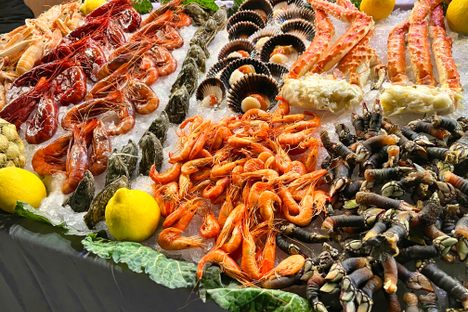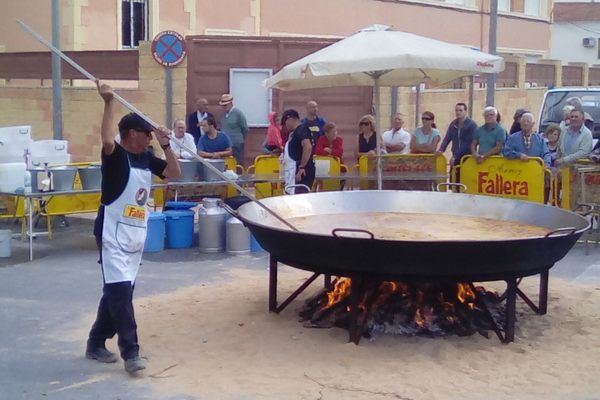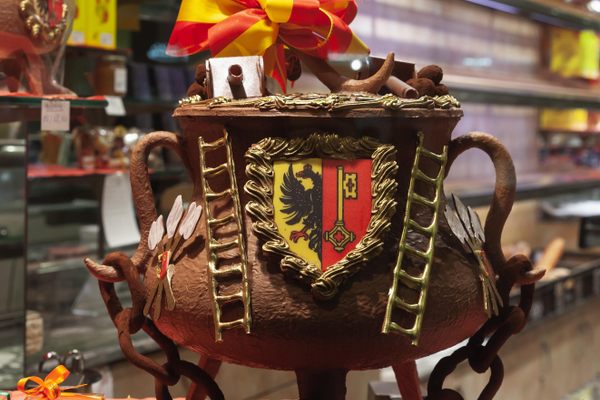Sweets
Mocadorá
Every autumn, Valencians celebrate their love by giving handkerchiefs filled with decorated marzipan treats.
On October 9, residents of Valencia have a lot to celebrate. Not only is it the National Day of the Valencian Community, but it is also a day when shops throughout the city feature window displays brimming with tiny marzipan fruits and suggestive shapes made for the city’s lovers. According to tradition, in preparation for the event, people visit pastelerias (bakeries and pastry shops) in search of the most delicious and delicately-decorated treats, which they wrap in a handkerchief. On the special day, also known for the patron saint of lovers (Sant Dionís), the treat-filled handkerchief, called a mocadorá, is ceremoniously given to wives, mothers, or partners in honor of the lovers’ shared affection.
Some accounts refer to the origins of the mocadorá (pronounced “mocaorá” by Valencians) as part of a legacy dating back to the reign of James I of Aragon. According to local lore, residents showered the king (and the queen) with baskets of fruits and vegetables when he arrived in Valencia after conquering the Moors in the 13th century. The king’s victory was thereafter celebrated every October 9, eventually with gunpowder-fueled pyrotechnics. When Philip V tried to put an end to the festivities in the early 18th century, Valencia’s bakers responded by cheekily making marzipan in the shape of the banned fireworks and rockets (piuletas and tronadors). They also made marzipan shaped like fruits and vegetables, a reference to the original bounty presented to the king and queen. Given the explosive-inspired sweets’ resemblance to male and female anatomy, along with fruit’s fertile symbolism, it was only fitting that the treats became linked to lovers.
And so it is that every year on October 9, in conjunction with celebrating Valencian identity, lucky lovers find themselves unwrapping an explosive history of peace, war, and love.
Written By
 Leigh ChavezBush
Leigh ChavezBush
Sources
- lolacoci.blogspot.com/2014/10/piuleta-i-tronaor.html
- www.elmundo.es/elmundo/2012/10/08/valencia/1349721254.html
- www.europapress.es/comunitat-valenciana/noticia-mocaora-20161007175138.html
- www.valencia-tourist-travel-guide.com/national-day-of-the-region-of-valencia.html
- valenciaculture.com/origen-de-la-mocaora/
- www.valenciabonita.es/2016/09/27/el-museo-de-la-seda-de-valencia-el-archivo-gremial-mas-antiguo-y-amplio-de-europa/
- www.valenciabonita.es/2016/10/03/per-sant-donis-la-mocadora-piuletes-y-tronadors-en-el-dia-de-los-enamorados-valencianos/
- books-google-com.proxyiub.uits.iu.edu/books?id=aUzLVON2UdMC&dq=mocador%C3%A1&lr=&source=gbs_navlinks_s
- www.lovevalencia.com/la-mocadora.html















